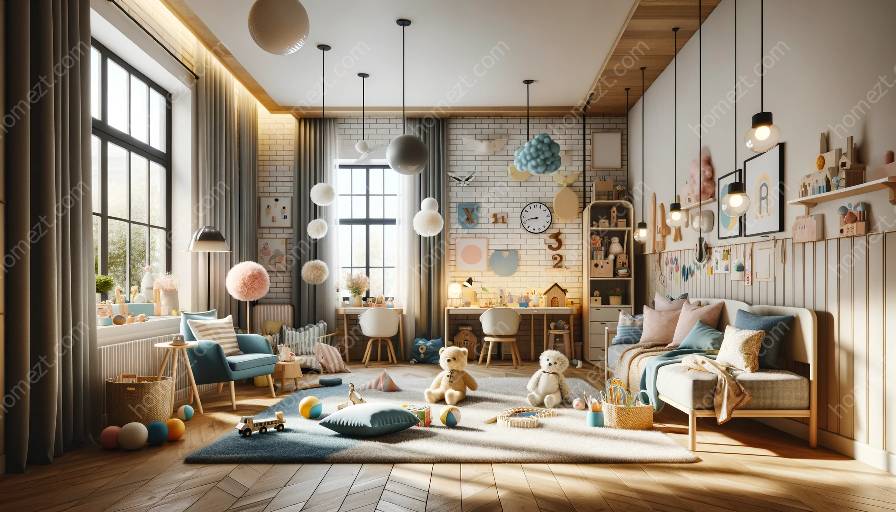Kids' room design is an exciting opportunity to merge art, creativity, and functionality. With the right approach, a child's room can become a canvas for imagination and self-expression. This article explores the intersection of art, creativity, children's room design, and interior styling to help you create a stimulating and appealing environment for young minds.
The Impact of Art and Creativity in Kids' Room Design
Art and creativity play a crucial role in a child's development. By incorporating art and creative elements into their living space, you can create an environment that nurtures their imagination, self-expression, and cognitive skills. In the context of room design, art and creativity can manifest in various forms such as wall art, decor, furniture, and color palettes, all of which contribute to shaping a visually engaging and inspiring space.
Blending Children's Room Design with Interior Styling
Children's room design should seamlessly integrate with broader interior styling principles. While embracing the whimsical and imaginative nature of kids' spaces, it's important to ensure that the room's design aligns with the overall aesthetic of the home. Balancing functionality and style is key—creating a space that is not only visually captivating for children but also harmonizes with the rest of the home's design.
Practical Tips for Harnessing Art and Creativity
To effectively harness art and creativity in kids' room design, consider the following:
- Murals and Wall Art: Incorporate vibrant murals or wall art that reflect a child's interests or favorite themes. This can serve as a focal point for the room and stimulate creativity.
- Functional Decor: Introduce decor elements that are both visually appealing and functional, such as shelving units that display books and toys in an artistic manner.
- Interactive Spaces: Design interactive areas where children can engage in creative activities, such as a dedicated art corner or a chalkboard wall for drawing and writing.
- Color Psychology: Utilize color psychology to evoke certain moods and stimulate creativity. Incorporate a mix of calming and energizing hues to create a balanced atmosphere.
- Furniture Design: Choose furniture that is not only aesthetically pleasing but also encourages imaginative play and exploration, such as whimsical-shaped seating and multi-functional pieces.
- Personalization: Allow children to personalize their space with their artwork, crafts, and DIY projects, fostering a sense of ownership and creativity.
Creating a Multi-Sensory Experience
Art and creativity in kids' room design should evoke a multi-sensory experience. Consider incorporating elements such as textured wallpapers, interactive lighting, and sensory-friendly furnishings to engage a child's senses and promote holistic development.
Embracing Versatility and Adaptability
A well-designed kids' room should be versatile and adaptable to accommodate a child's evolving interests and needs. Embrace versatile design elements and furniture that can grow with the child, allowing the space to transition seamlessly through different developmental stages.
Conclusion
Harnessing art and creativity in kids' room design is a dynamic and rewarding process. By merging children's room design with principles of interior styling and incorporating art and creativity in thoughtful ways, you can create a space that inspires and nurtures young minds. Embrace the imaginative spirit of childhood while ensuring that the room is functional, versatile, and visually captivating. With the right balance, you can create an environment where art, creativity, and practicality converge to form an engaging and enchanted space for children.


























